Theoretical Optimization of Trapped-Bubble-Based Acoustic Metamaterial Performance
Abstract
1. Introduction
2. Problem Formulation
2.1. Domain Definition
2.2. Single Bubble
2.3. Bubble Array
2.4. Bubble Array with Reflector
3. Results and Discussion
3.1. Metascreen Modes
3.2. Reflector Effect
3.3. Numerical Validation
4. Conclusions
Author Contributions
Funding
Conflicts of Interest
References
- Veselago, V.G. The electrodynamics of substances with simultaneously negative values of and µ. Sov. Phys. Usp. 1968, 10, 509. [Google Scholar] [CrossRef]
- Commander, K.W.; Prosperetti, A. Linear pressure waves in bubbly liquids: Comparison between theory and experiments. J. Acoust. Soc. Am. 1989, 85, 732–746. [Google Scholar] [CrossRef]
- Pendry, J.B. Negative refraction makes a perfect lens. Phys. Rev. Lett. 2000, 85, 3966. [Google Scholar] [CrossRef]
- Cummer, S.A.; Christensen, J.; Alù, A. Controlling sound with acoustic metamaterials. Nat. Rev. Mater. 2016, 1, 1–13. [Google Scholar] [CrossRef]
- Iannace, G.; Berardi, U.; Ciaburro, G.; Trematerra, A. Sound Attenuation of an Acoustic Barrier Made with Metamaterials. 2019. Available online: https://jcaa.caa-aca.ca/index.php/jcaa/article/view/3308 (accessed on 18 August 2020).
- Milton, G.W.; Willis, J.R. On modifications of Newton’s second law and linear continuum elastodynamics. Proc. R. Soc. R. Soc. 2007, 463, 855–880. [Google Scholar] [CrossRef]
- Yao, S.; Zhou, X.; Hu, G. Experimental study on negative effective mass in a 1D mass–spring system. New J. Phys. 2008, 10, 043020. [Google Scholar] [CrossRef]
- Huang, H.; Sun, C.; Huang, G. On the negative effective mass density in acoustic metamaterials. Int. J. Eng. Sci. 2009, 47, 610–617. [Google Scholar] [CrossRef]
- Huang, G.; Sun, C. Band gaps in a multiresonator acoustic metamaterial. J. Vib. Acoust. 2010, 132, 031003. [Google Scholar] [CrossRef]
- Tan, K.T.; Huang, H.; Sun, C. Optimizing the band gap of effective mass negativity in acoustic metamaterials. Appl. Phys. Lett. 2012, 101, 241902. [Google Scholar] [CrossRef]
- Manimala, J.M.; Sun, C. Microstructural design studies for locally dissipative acoustic metamaterials. J. Appl. Phys. 2014, 115, 023518. [Google Scholar] [CrossRef]
- Chen, Y.; Barnhart, M.; Chen, J.; Hu, G.; Sun, C.; Huang, G. Dissipative elastic metamaterials for broadband wave mitigation at subwavelength scale. Compos. Struct. 2016, 136, 358–371. [Google Scholar] [CrossRef]
- Leroy, V.; Strybulevych, A.; Scanlon, M.; Page, J. Transmission of ultrasound through a single layer of bubbles. Eur. Phys. J. E 2009, 29, 123–130. [Google Scholar] [CrossRef]
- Bretagne, A.; Tourin, A.; Leroy, V. Enhanced and reduced transmission of acoustic waves with bubble meta-screens. Appl. Phys. Lett. 2011, 99, 221906. [Google Scholar] [CrossRef]
- Lanoy, M.; Guillermic, R.M.; Strybulevych, A.; Page, J.H. Broadband coherent perfect absorption of acoustic waves with bubble metascreens. Appl. Phys. Lett. 2018, 113, 171907. [Google Scholar] [CrossRef]
- Cai, Z.; Zhao, S.; Huang, Z.; Li, Z.; Su, M.; Zhang, Z.; Zhao, Z.; Hu, X.; Wang, Y.S.; Song, Y. Bubble Architectures for Locally Resonant Acoustic Metamaterials. Adv. Funct. Mater. 2019, 29, 1906984. [Google Scholar] [CrossRef]
- Leroy, V.; Bretagne, A.; Lanoy, M.; Tourin, A. Band gaps in bubble phononic crystals. AIP Adv. 2016, 6, 121604. [Google Scholar] [CrossRef]
- Gritsenko, D.; Lin, Y.; Hovorka, V.; Zhang, Z.; Ahmadianyazdi, A.; Xu, J. Vibrational modes prediction for water-air bubbles trapped in circular microcavities. Phys. Fluids 2018, 30, 082001. [Google Scholar] [CrossRef]
- Chindam, C.; Nama, N.; Ian Lapsley, M.; Costanzo, F.; Jun Huang, T. Theory and experiment on resonant frequencies of liquid-air interfaces trapped in microfluidic devices. J. Appl. Phys. 2013, 114, 194503. [Google Scholar] [CrossRef]
- Leroy, V.; Strybulevych, A.; Lanoy, M.; Lemoult, F.; Tourin, A.; Page, J.H. Superabsorption of acoustic waves with bubble metascreens. Phys. Rev. B 2015, 91, 020301. [Google Scholar] [CrossRef]
- Gupta, A. A review on sonic crystal, its applications and numerical analysis techniques. Acoust. Phys. 2014, 60, 223–234. [Google Scholar] [CrossRef]
- Leroy, V.; Bretagne, A.; Fink, M.; Willaime, H.; Tabeling, P.; Tourin, A. Design and characterization of bubble phononic crystals. Appl. Phys. Lett. 2009, 95, 171904. [Google Scholar] [CrossRef]
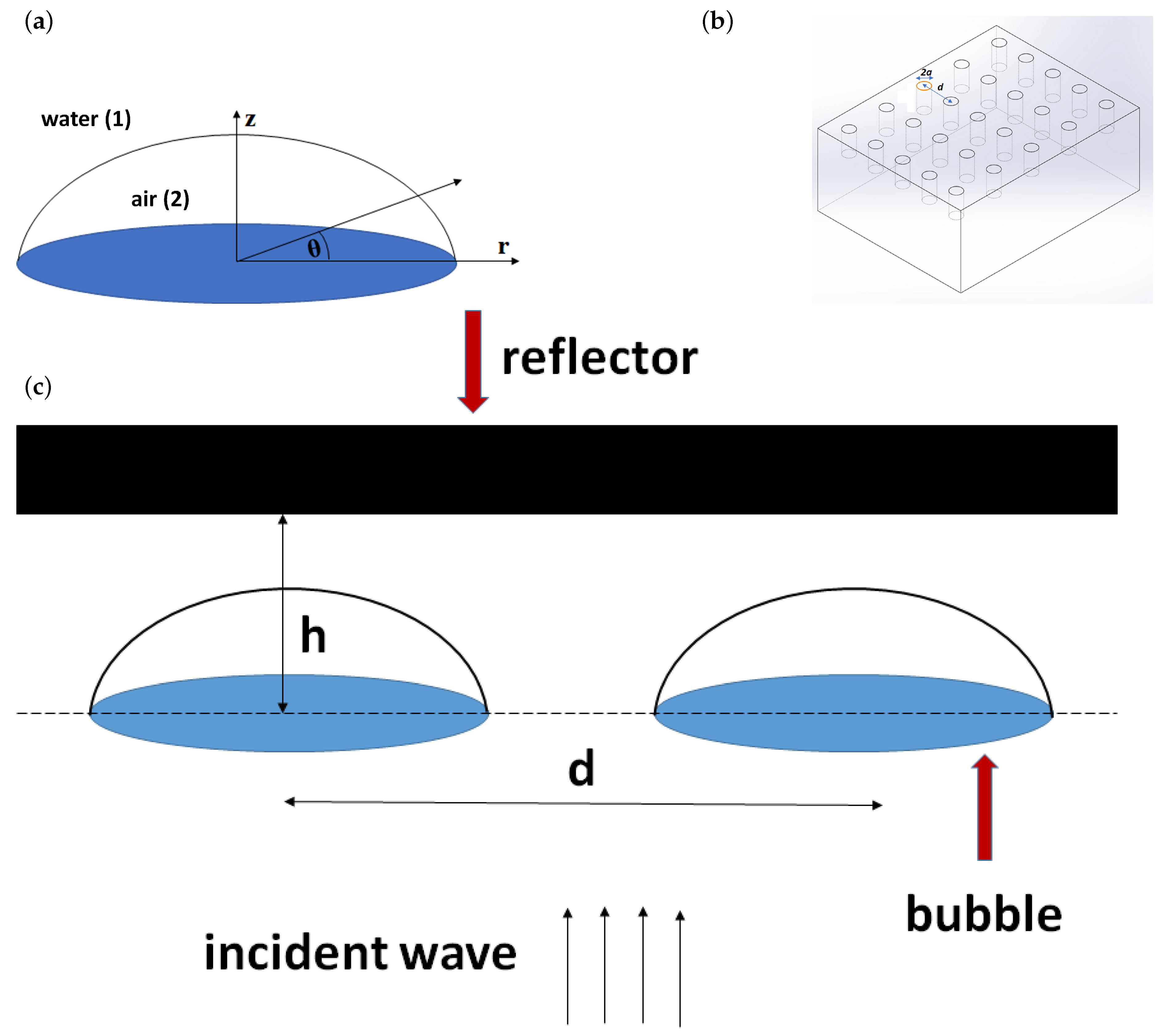
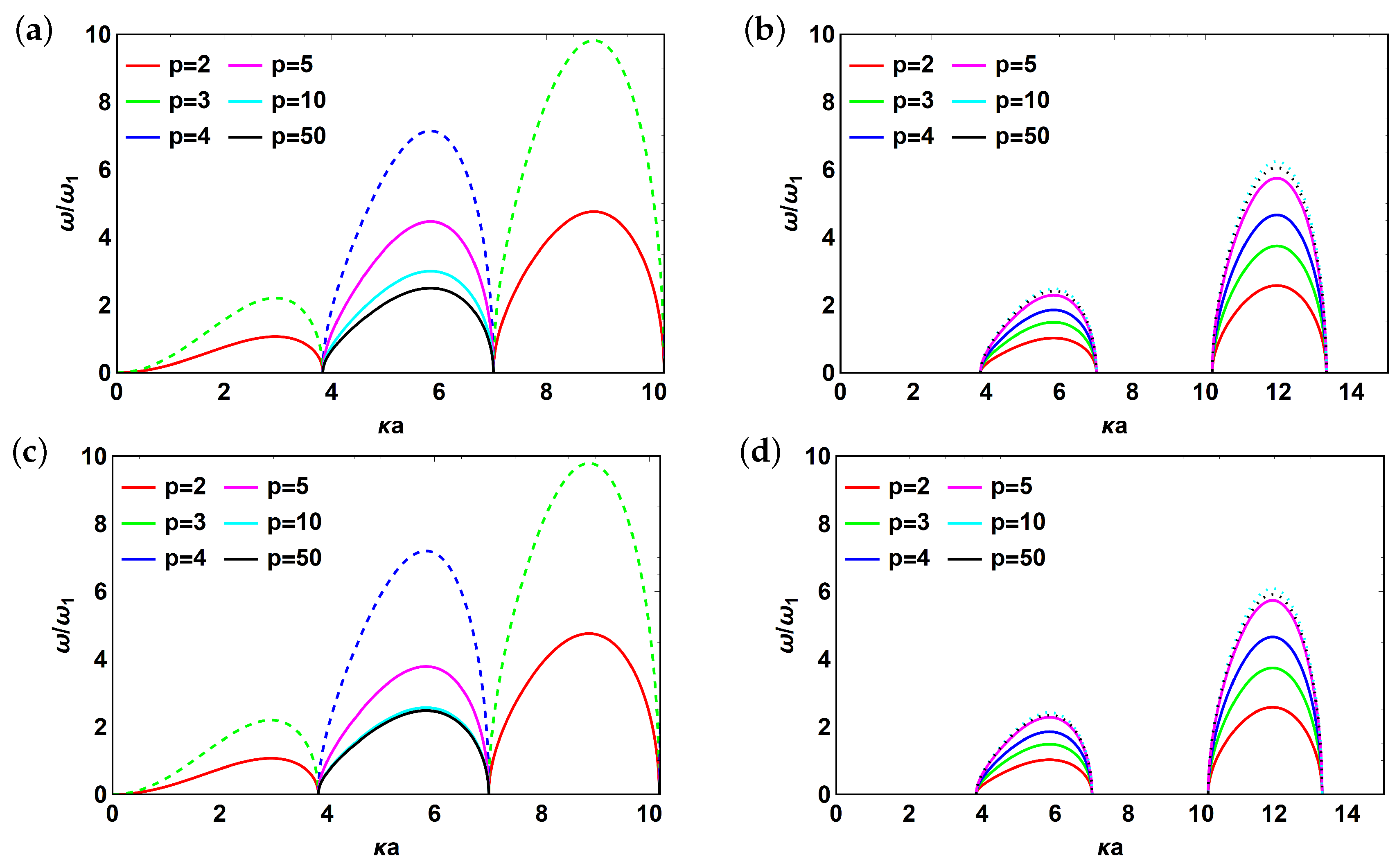
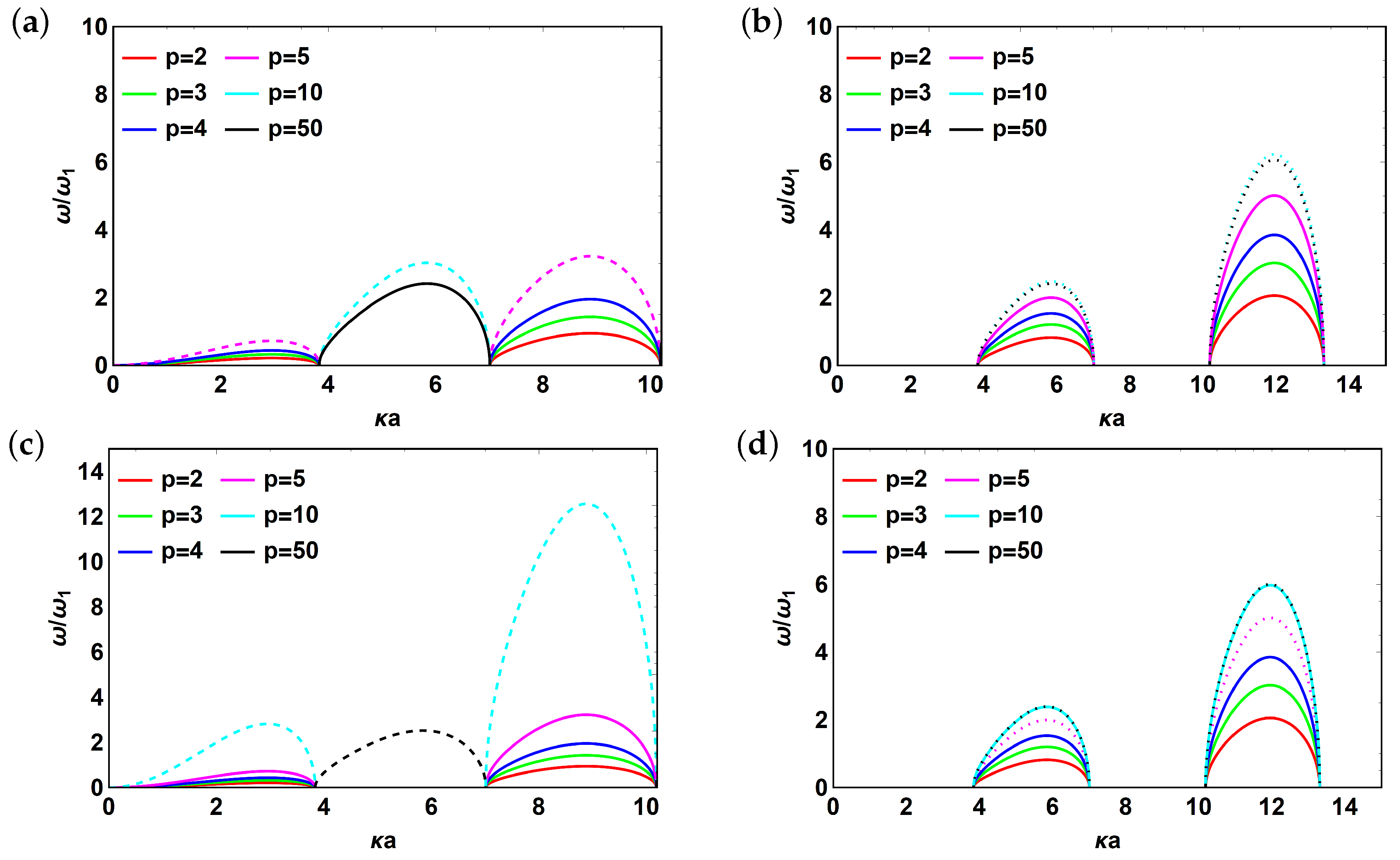
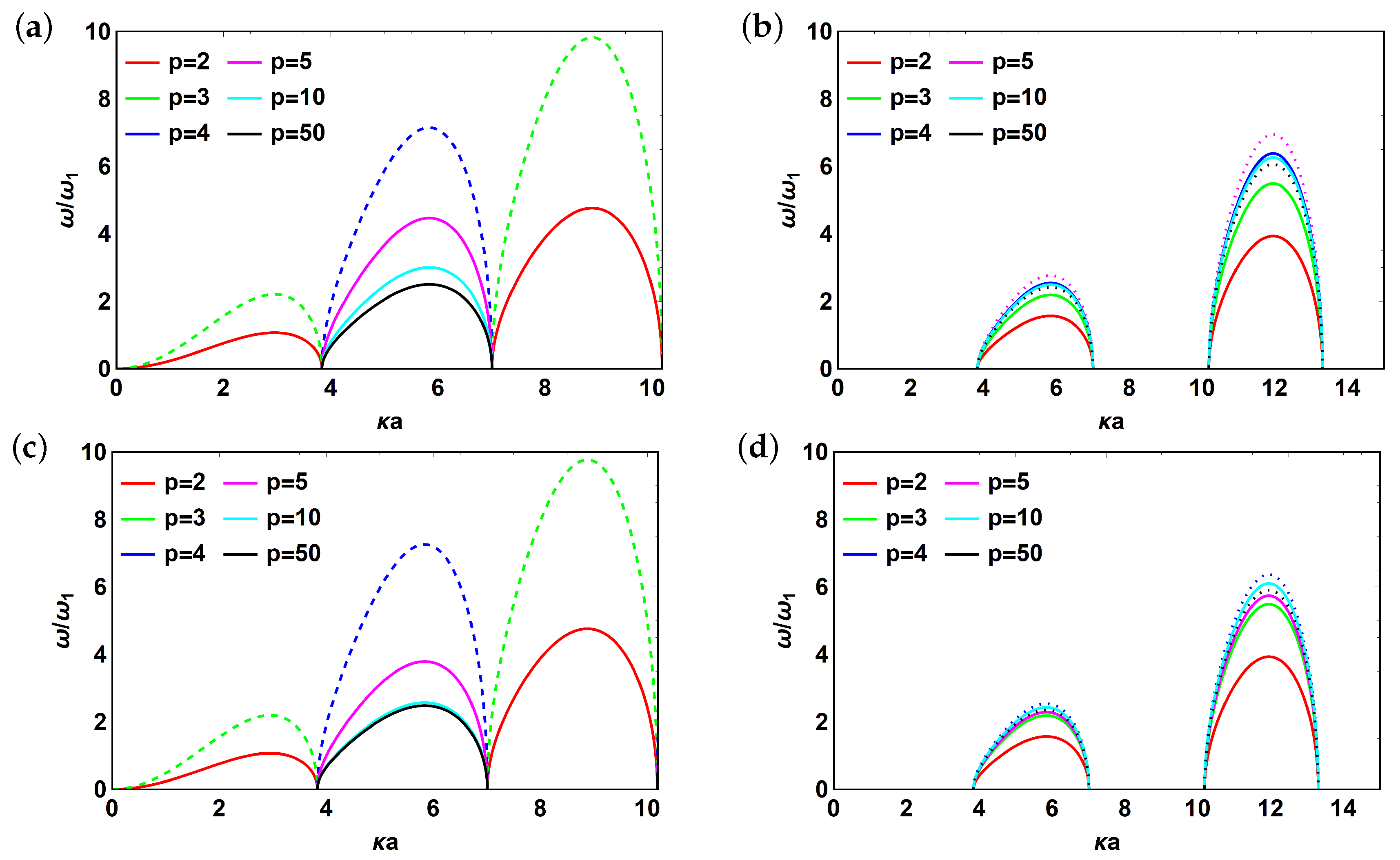
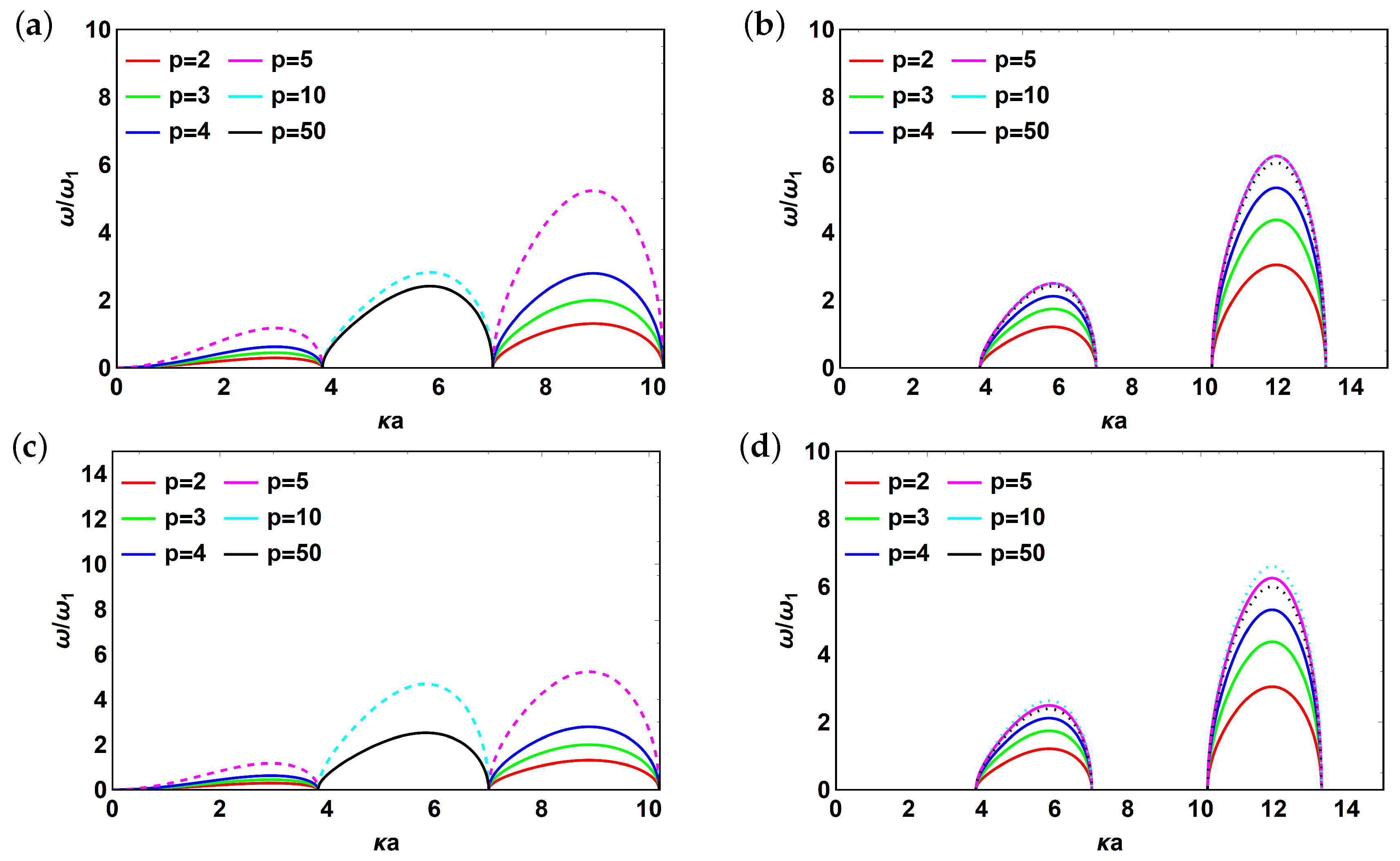
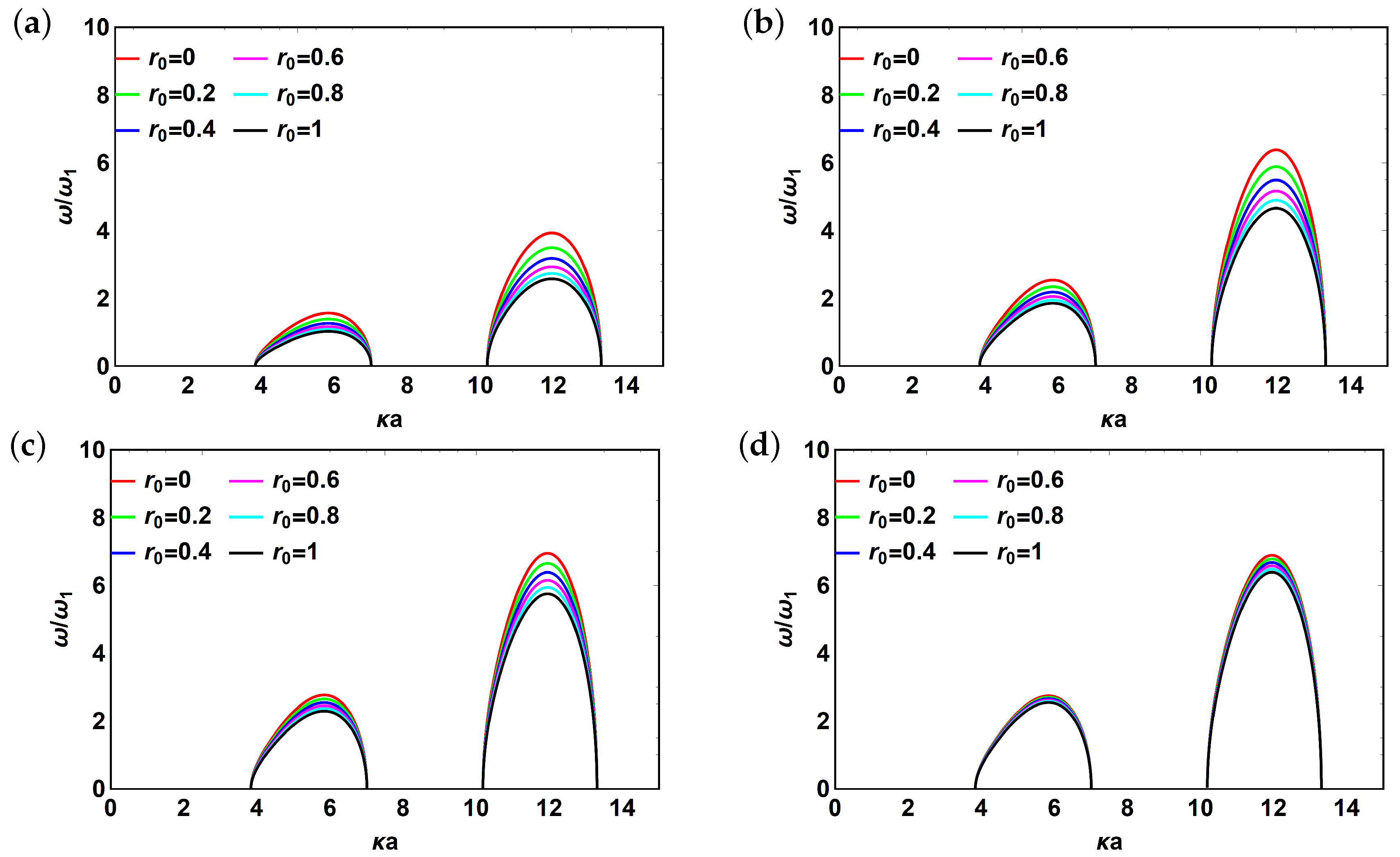
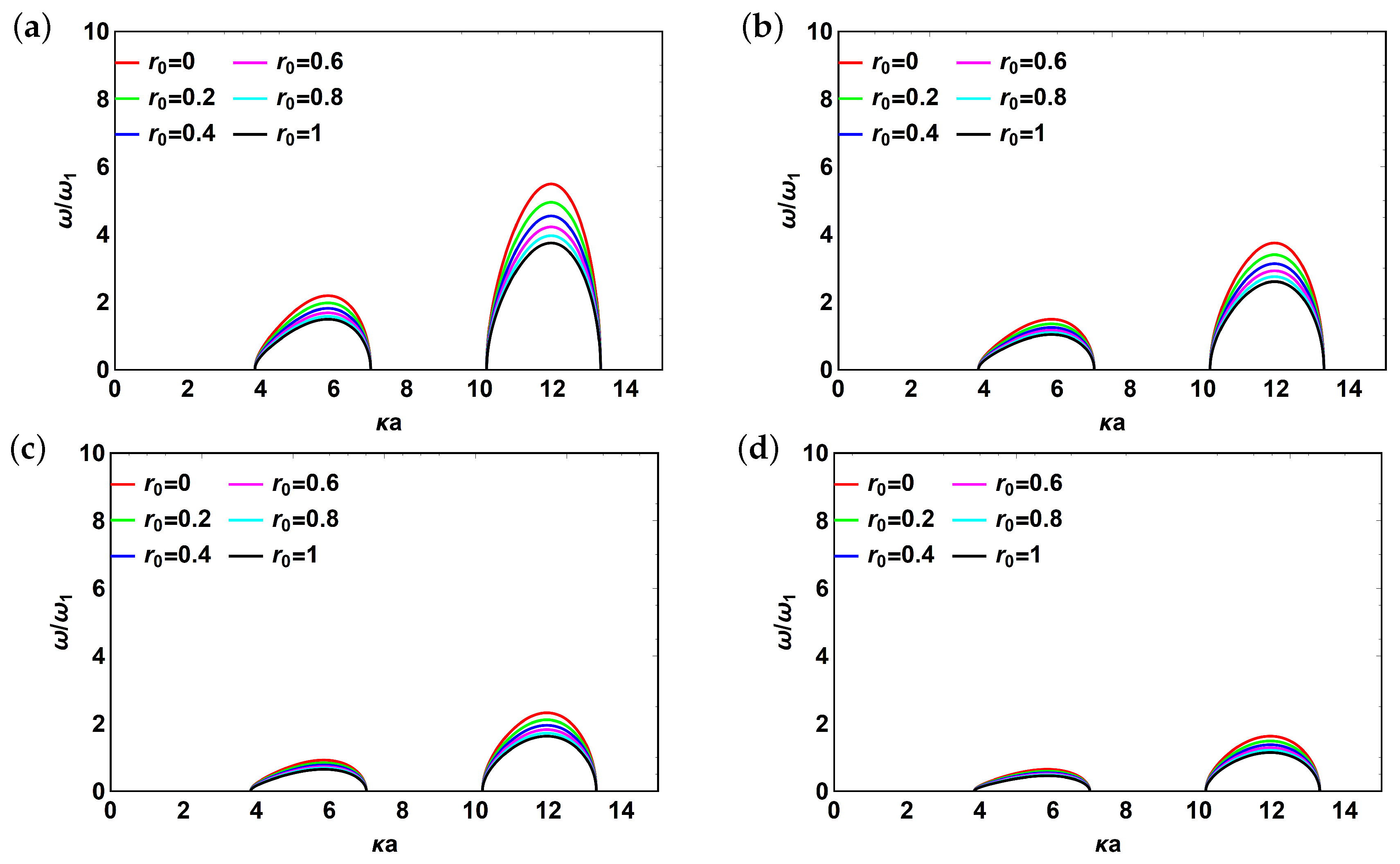
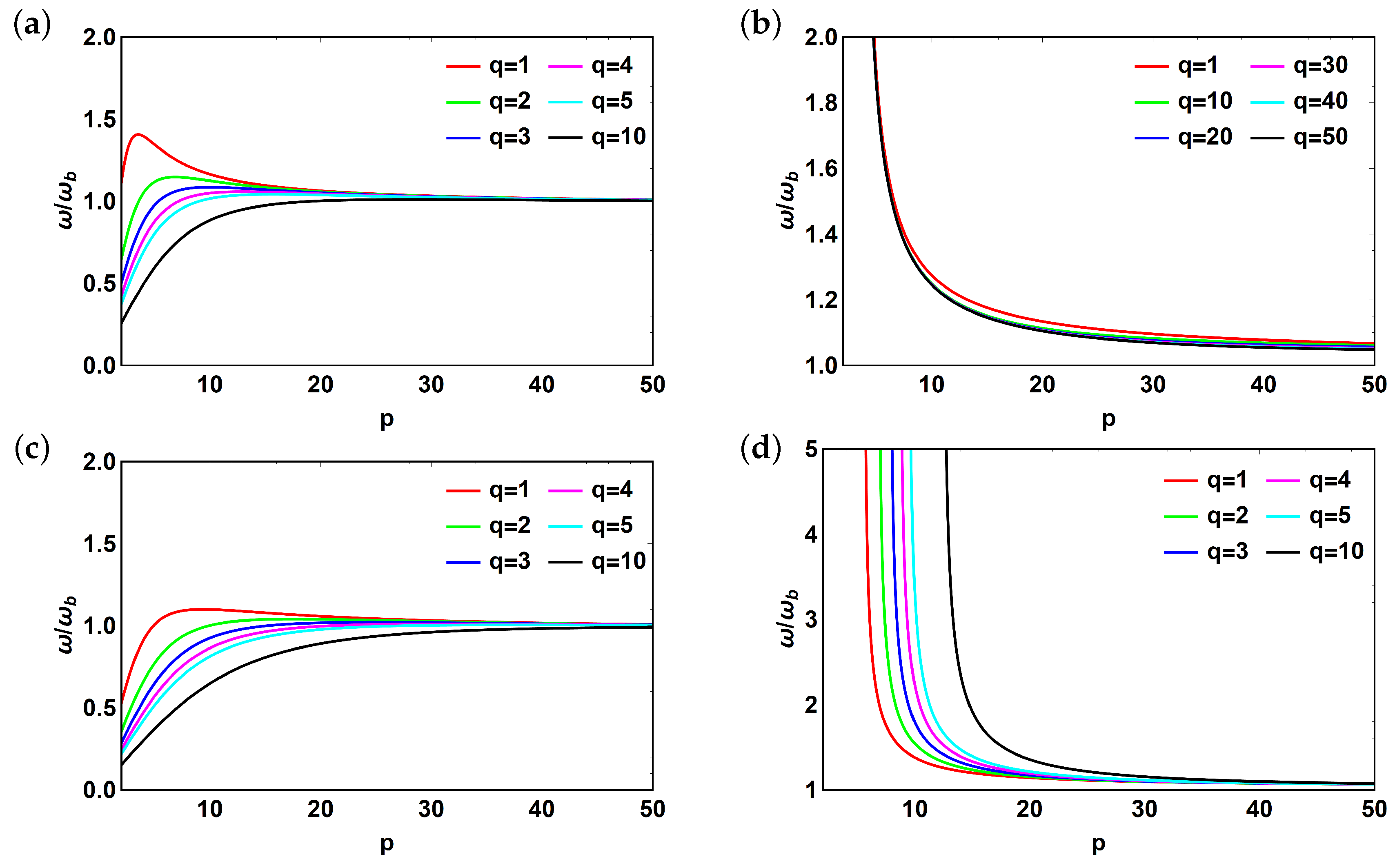
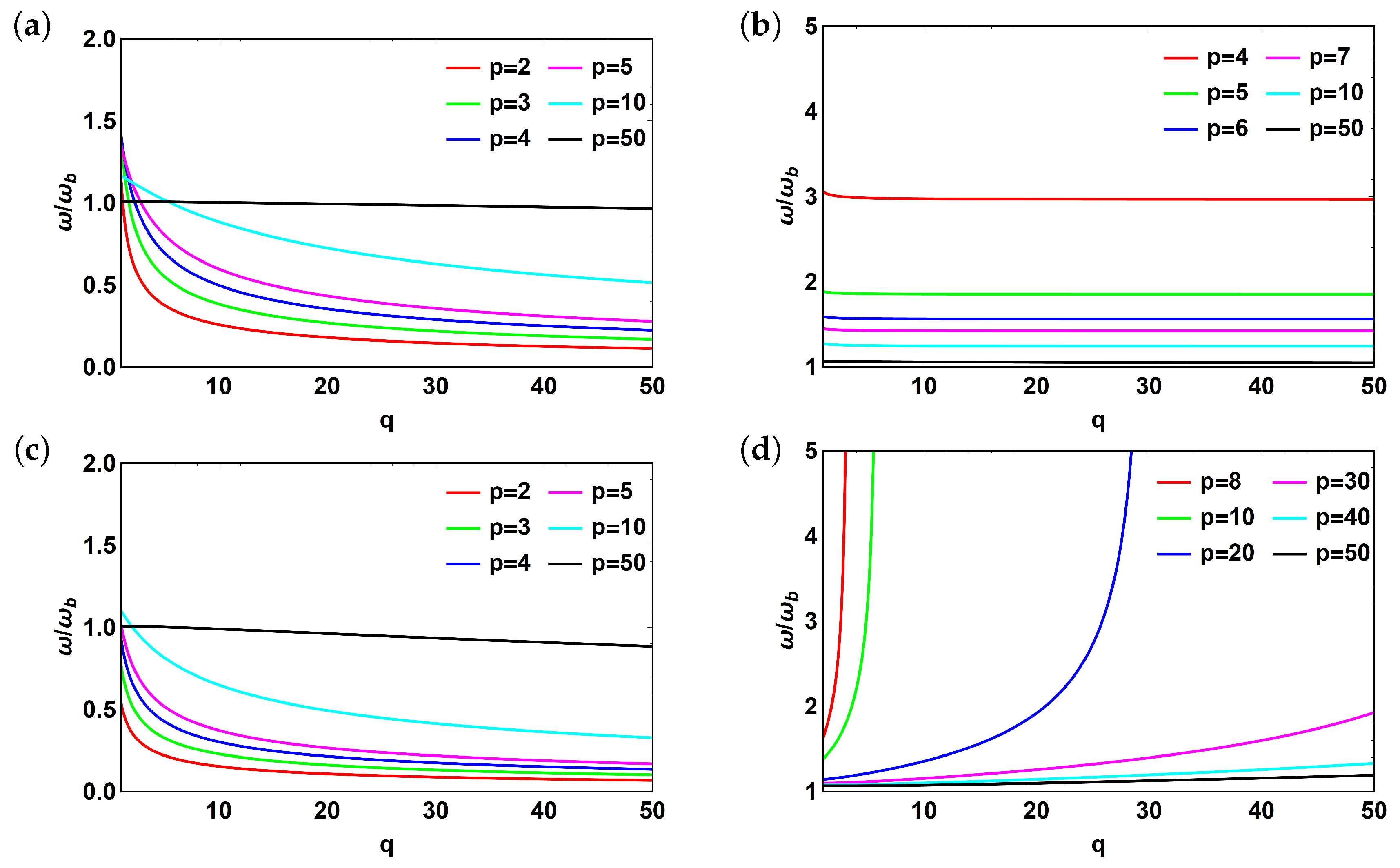
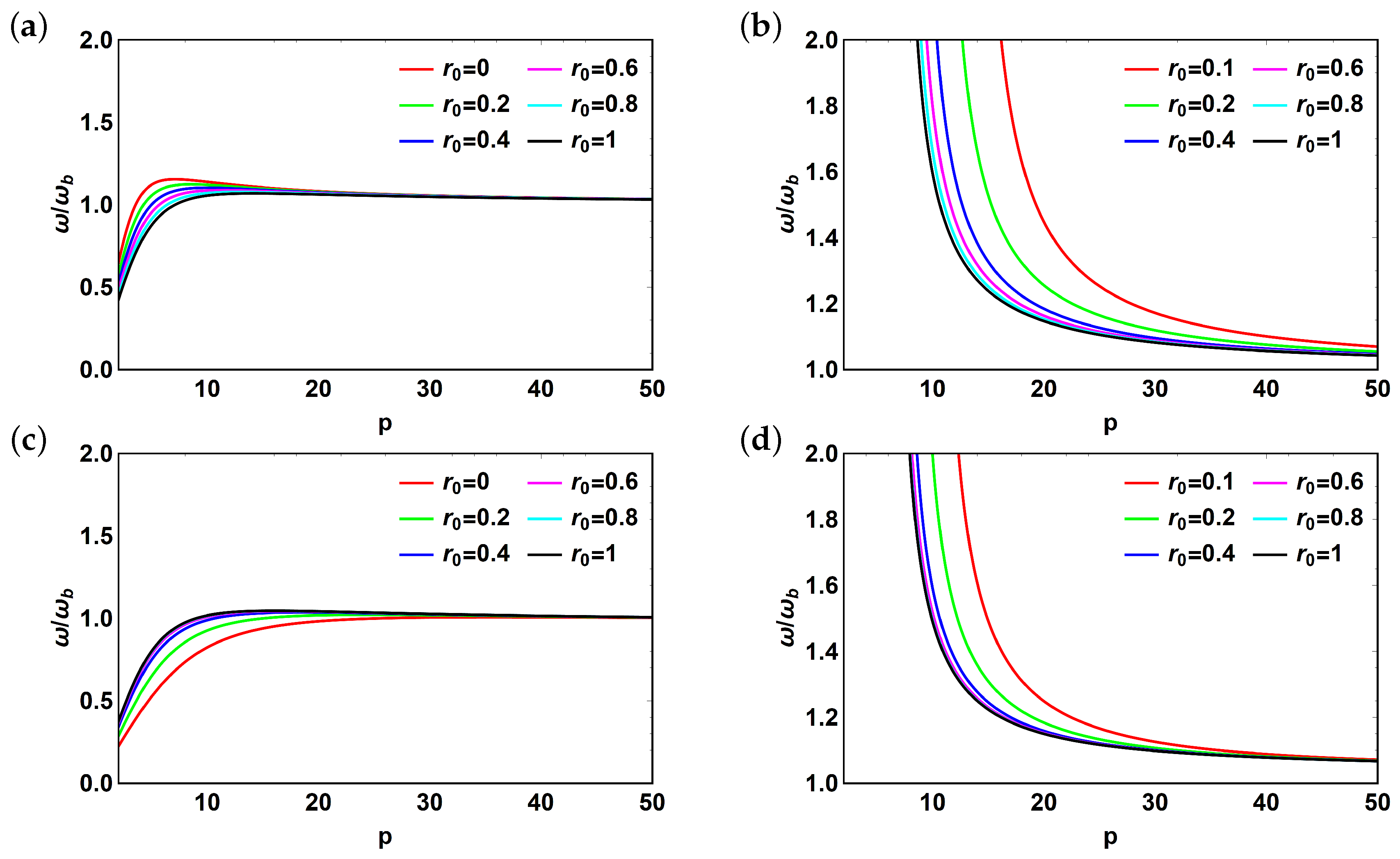
© 2020 by the authors. Licensee MDPI, Basel, Switzerland. This article is an open access article distributed under the terms and conditions of the Creative Commons Attribution (CC BY) license (http://creativecommons.org/licenses/by/4.0/).
Share and Cite
Gritsenko, D.; Paoli, R. Theoretical Optimization of Trapped-Bubble-Based Acoustic Metamaterial Performance. Appl. Sci. 2020, 10, 5720. https://doi.org/10.3390/app10165720
Gritsenko D, Paoli R. Theoretical Optimization of Trapped-Bubble-Based Acoustic Metamaterial Performance. Applied Sciences. 2020; 10(16):5720. https://doi.org/10.3390/app10165720
Chicago/Turabian StyleGritsenko, Dmitry, and Roberto Paoli. 2020. "Theoretical Optimization of Trapped-Bubble-Based Acoustic Metamaterial Performance" Applied Sciences 10, no. 16: 5720. https://doi.org/10.3390/app10165720
APA StyleGritsenko, D., & Paoli, R. (2020). Theoretical Optimization of Trapped-Bubble-Based Acoustic Metamaterial Performance. Applied Sciences, 10(16), 5720. https://doi.org/10.3390/app10165720





